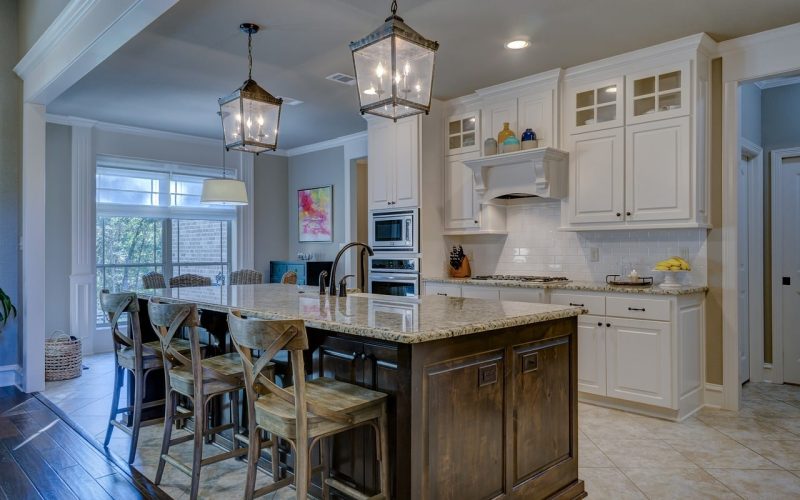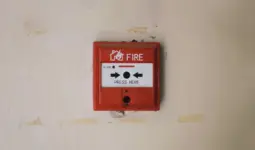The statement that there are different types of light fixtures for every room and every need is not hyperbole.
Knowing the many different types of light fixtures and their functions is crucial because good lighting can completely change any space’s atmosphere.
Below are 12 options, ranging from classy chandeliers to contemporary, sleek track lights, to help you navigate the market.
However, over time, there have been significant advancements in lighting, especially in LED lighting.
This is also in line with adjustments in household lighting requirements and lifestyle.
Today, you can use a single room for various activities, including relaxing, working, playing, and more.
It can be challenging to locate the ideal lighting to meet those requirements. Here are the different types of light fixtures.
1. Ceiling Fixture
A residential home typically has one or more permanent ceiling light fixtures that are hard-wired into a permanent electrical circuit and controlled by wall switches in the living areas and hallways.
For most rooms residents use regularly, general lighting is required by code.
Furthermore, A floor lamp or table lamp plugged into an outlet that a wall switch can turn on and off may also be permitted by the code to provide this general illumination in place of the typical ceiling fixture or wall sconce controlled by a wall switch near the room’s entrance.
2. Hanging Ceiling Fixture
Chandeliers and pendant lights appear to float in space, hanging from the ceiling and supported by chains or cords.
These can be ornate, branch-shaped fixtures in various designs, from the sparkling, antique crystal chandeliers we typically associate with French chateaux to the flashy, Las Vegas-inspired fixtures.
A single bulb is used to illuminate tiers of seashells, feathers, tassels, or other materials fastened to a wire base to create contemporary chandeliers.
Furthermore, hanging lighting fixtures come in much more basic designs. A simple light consisting of a bulb covered in a shade made of silk, wood, plastic, rattan, or any other material is referred to as pendant lighting.
Other types of pendant lighting include traditional globe lighting, industrial metal fixtures, and simple lights. This is one of the different types of light fixtures.
Furthermore, to add ambient lighting and establish a focal point, a sizable chandelier or pendant light may be hung from the ceiling in the room’s center.
To further define the space, hang smaller chandeliers or pendant lights over dining tables, kitchen islands, bathroom sink vanities, or on either side of beds. You can also control the amount of light by hanging your light fixture at the proper height.
3. Wall Sconces
Another type of permanent lighting fixture is a wall sconce, which is mounted on the wall rather than the ceiling.
You can hang plug-in lamps on the wall to achieve the same effect, though they are typically hardwired into a circuit and controlled by a wall switch.
These are typical bathroom mirror lighting fixtures often placed above nightstand tables to provide accent lighting while freeing up space that table lamps would otherwise take up.
They may also offer a hallway with gentle lighting. When turned off, they serve as decoration and cast gentle light onto the wall.
4. Floor Lamp
Standing lamps, also known as floor lamps, are available in various designs that can be used in different rooms of the house.
From a design standpoint, floor lamps are frequently decorative sculptures that enhance a space even when off.
Large rooms like the living room or an open-plan loft are best suited for larger formats like arc lights, column lamps, tripod lamps, or oversized floor lamps.
Also, smaller profile standing lamps, such as metal reading floor lamps, can be positioned behind an armchair or at the end of a sofa. You can use tall, slender torchères in corners.
5. Table Lamp
A table lamp is a plug-in fixture, just like a floor lamp, but its short height makes it perfect for resting on an end table or other horizontal surface instead of the floor.
They are available in various shapes, heights, materials, and designs. While they offer useful lighting for tasks like reading and other tasks, they are more frequently used to create a cozy atmosphere in a space.
Table lamps come in various designs, such as traditional, modern, and industrial.
A table lamp’s ability to produce high-quality light depends on multiple elements, such as the choice of lampshade and bulb, the lamp’s height, and whether or not it has a dimmer. This is one of the different types of light fixtures.
6. Desk Lamp
Desk lamps are plug-in table lamps that can be adjusted to direct light in a specific direction to illuminate the task at hand.
Depending on your taste, you can also find desk lamps in vintage or modern minimalist designs.
If you frequently complete paperwork, a good desk lamp is much more effective than a table lamp at reducing eye strain.
7. Decorative Accent Lightning
The decorative accent lighting that completes a room’s lighting scheme can take the form of neon-lit signage, garland lights, strings of Edison bulbs or fairy lights, lighted wall sculptures, hurricane lanterns filled with candles, or ornamental light sculptures in the form of animals, planets, or whatever else you can think of.
Every room will feel thoughtful, welcoming, and finished if it has at least one decorative accent light.
8. Down Light
A downlight is defined as a light that is installed or created to direct light downward.
To provide downward lighting, the lamps are recessed and mounted on the ceiling.
They are typically used in commercial lighting, kitchens, bathrooms, and bedrooms in private residences.
The downlight’s recessed installation won’t harm the ceiling’s aesthetic appeal and won’t make it appear obtrusive.
They cling to the ceiling and provide lighting while taking up no space.
This is a novel installation technique that is simple to use. The lighting area is sizable, and the light output is even and not dispersed.
There isn’t any additional unique lighting decoration; it is just regular lighting. This is one of the different types of light fixtures.
9. Panel Light
When connected to a power source, the LED panel light’s aluminum backlit guide plate produces a bright surface mounting frame and uniform illumination.
The light guide and diffuser plates work with the panel light to create an even, broad, and soft illumination.
Panel lights are used in large indoor spaces, particularly in public utility areas like offices, hospitals, schools, conference rooms, etc.
This is specifically because of the lighting method that panel lights employ.
10. Pendant Light
A pendant light is a type of ceiling-mounted lighting. Fishing the light fixture suspended from the ceiling by ropes, chains, or metal rods.
Panel lights, linear strip lights, and track lights are just a few examples of pendant lighting.
Some indoor ceilings are too high, so chains are used to suspend the lamps so that they are lower to the ground and emit a brighter, more usable light.
In larger indoor spaces, high-power lamps are used. Homes and art galleries are more likely to have low-power lighting.
They may also serve a decorative purpose. However, the lighting system is a crucial component of interior architectural design.
11. Linear Light
In linear lighting, many “light-emitting diodes” are contained in a long, narrow housing.
The lamp is longer and can be surface mounted on the wall or ceiling, recessed into the wall or ceiling, or hung from the ceiling.
Public spaces like offices, workshops, warehouses, garages, etc., frequently have linear lighting.
As LED technology and linear architectural lighting continue to advance, they are increasingly showing up in our daily lives in various ways, whether embedded, surface-mounted, lifted, etc.
In general, LED lighting has a much greater lifespan than fluorescent lighting, which is more in keeping with the human-centric and energy-development concepts. This is one of the different types of light fixtures.
12. Wall Lights
A wall lamp is a type of lighting mounted on a wall. Most wall lamps don’t offer local lighting, preferring to use more aesthetically pleasing lighting.
Common in hallways, beside nightstands in bedrooms, gardens, art galleries, and other locations.
Adding wall lighting gives the house additional lighting support and interior decoration, making it appear less bland.
Many owners like the wall lamp because it is easy to install and has a brief appearance.








